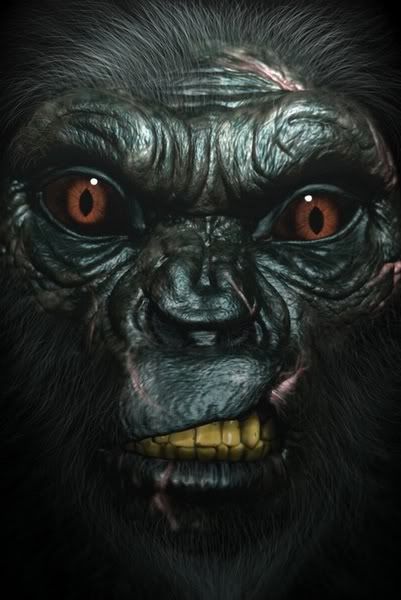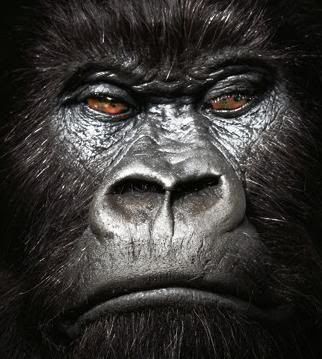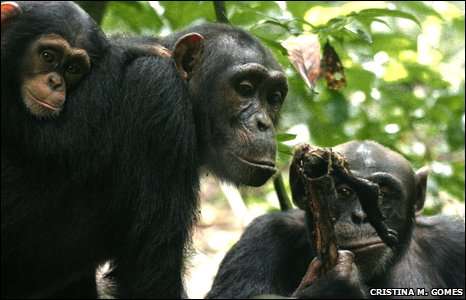OK, I have gone and read the actual paper that Alyrium Denryle linked to (thank you Alyrium), so as an interested nonscientist I can now talk about what it actually says instead of what's on what appears to be a rather sensationalistic promotional website.
First, a note on the seemingly ludicrous slit-eyes; that's actually based off the paper. The paper suggests that as near-carnivores it would have made sense for Neanderthals to hunt at night when most prey would be less active, and this fits with how their eye sockets are larger than modern humans. It actually doesn't sound that ludicrous, but I lack the knowledge to properly evaluate it. As for the other ape-like features, the paper basically suggests that Neanderthals would have been ape-like because it's parsimonious to assume the last common ancestor of humans and Neanderthals was more like other close relatives of humans, i.e. apes. It suggests that many of the features that make humans unlike other primates (like hairlessness) were adaptations to allow us to distinguish our own kind from Neanderthals more easily. The big weakness I see in the argument is the assumption that the last common ancestor of humans and Neanderthals
was apelike. For instance I've heard speculation that our loss of body hair was an adaptation for the African grasslands, in which case it would probably have long pre-dated the human-Neanderthal split. The paper also argues it's unlikely Neanderthals had clothing because they didn't have needles - I don't see why they couldn't have just have made belts and used them to tie clothing around themselves. Also the lack of a nose in the reconstruction; the paper suggests that's probable because noses would have been vulnerable to frostbite.
Now as to the meat of the paper. Most of the evidence for their case seems to be circumstantial; the fossil and genetic record fits with their hypothesis if you look at it the right way. I don't see anything impossible in their claims. I don't even find their claims on human-Neanderthal antagonism implausible. IIRC it fits with lions and hyenas, and makes a fair amount of sense for what would happen if you have two intelligent species competing for the same ecological niche. The main stretch I see is the magnitude of the effect Vendramini suggests this had on the human population and the enormous importance he assigns it in human evolution. The evidence in the paper
looks like it hangs together - but that's the thing about evolutionary paleobiology, at least at the interested amateur level I'm operating at you can come up with all sorts of wild hypothesis that are reasonably consistent with the evidence, because the evidence is so fragmentary.
Big Orange wrote:If so why the dark skin pigmentation and black hair? Why not a pinkish skin tone and light red or blonde body hair instead? A popular theory about Neanderthal's is that they had red hair.
The paper itself says nothing about Neanderthal skin tone, only that they might have had wrinkly skin like an ape on the same parsimony argument that they use to argue for their other ape-like features. I'm guessing they went with dark leathery skin because gorillas have it and, rather obviously, to make them look as alien and intimidating as possible.
Big Orange wrote:He's dreadful looking isn't he? Purposely drawn out to look as scary and unnatural as possible.
...
But now look at how appealing and cute contemporary great apes can look to us and they're less like us than the Neanderthals were:
Actually aside from the slit-eyes the reconstructions do quite closely resemble gorillas:


I think it's mostly the snarling ferocious expressions they give them that does it. Give that face a neutral expression like the gorilla, and take away the scars around the mouth that are pretty obviously designed to evoke an image of streaks of blood, and maybe lighten the picture a bit, and it would look alien but I think the horror movie effect would probably be much reduced.














 "
"